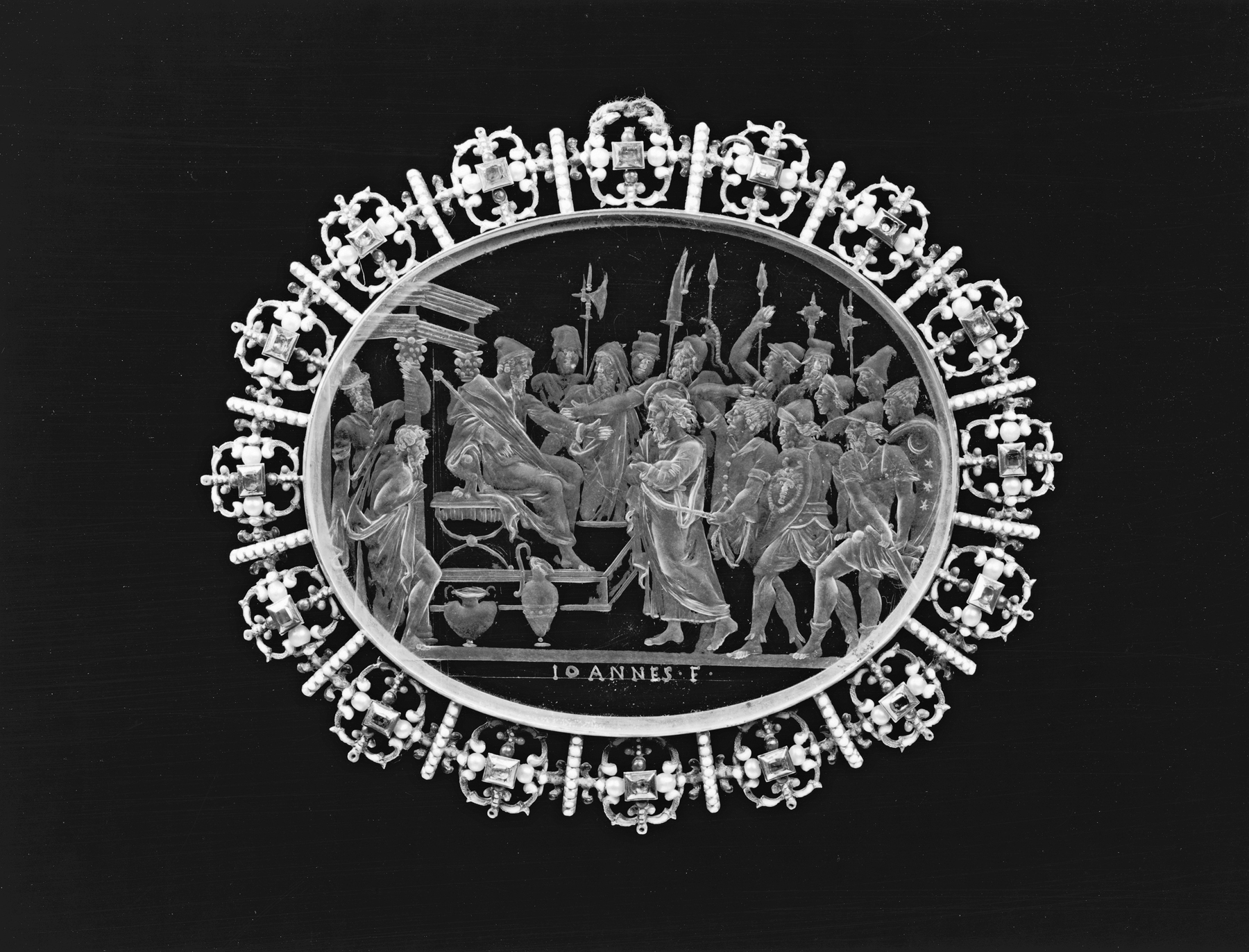Plaque with Christ before Pilate
(Renaissance Europe )
This work may be from a set of engraved rock crystal plaques depicting the life of Christ that, according to the writer Giorgio Vasari, Giovanni Bernardi completed in 1547 for Cardinal Alessandro Farnese (1520-89). They were probably intended to be set into a casket by another craftsman.
Bernardi was one of the most famous rock crystal engravers of the Renaissance. This plaque-with its closely packed, relief-like arrangement, oval shape, and tightly drawn figures-points to his familiarity with Roman intaglio carving on gems. The artist signed the plaque with his first name (in Latin) and F, short for "fecit" ("made this"). The delicate frame in gold and detailing in painted enamel may be from around 1600; framing the piece turns it into an independent object.
Inscription
Provenance
Provenance (from the French provenir, 'to come from/forth') is the chronology of the ownership, custody, or location of a historical object. Learn more about provenance at the Walters.
Cook [date and mode of acquisition unknown]; Cook Sale, July 1925, no. 469; Sadie Jones (Mrs. Henry Walters), New York [date and mode of acquisition unknown]; Mrs. Henry Walters Sale, New York, December 4, 1943, no. 996; Walters Art Museum, 1943, by purchase.
Exhibitions
| 1984 | The Taste of Maryland: Art Collecting in Maryland 1800-1934. The Walters Art Gallery, Baltimore. |
Conservation
| Date | Description | Narrative |
|---|---|---|
| 9/12/1963 | Treatment | cleaned |
| 5/2/1984 | Examination | examined for exhibition |
Geographies
Italy, Rome
(Place of Origin)
Italy, Faenza (Place of Origin)
Measurements
H: 3 7/8 × W: 4 5/8 × D: 3/8 in. (9.8 × 11.8 × 0.9 cm)
Credit Line
Museum purchase with funds provided by the S. & A.P. Fund, 1943
Location in Museum
Accession Number
In libraries, galleries, museums, and archives, an accession number is a unique identifier assigned to each object in the collection.
In libraries, galleries, museums, and archives, an accession number is a unique identifier assigned to each object in the collection.
41.240


